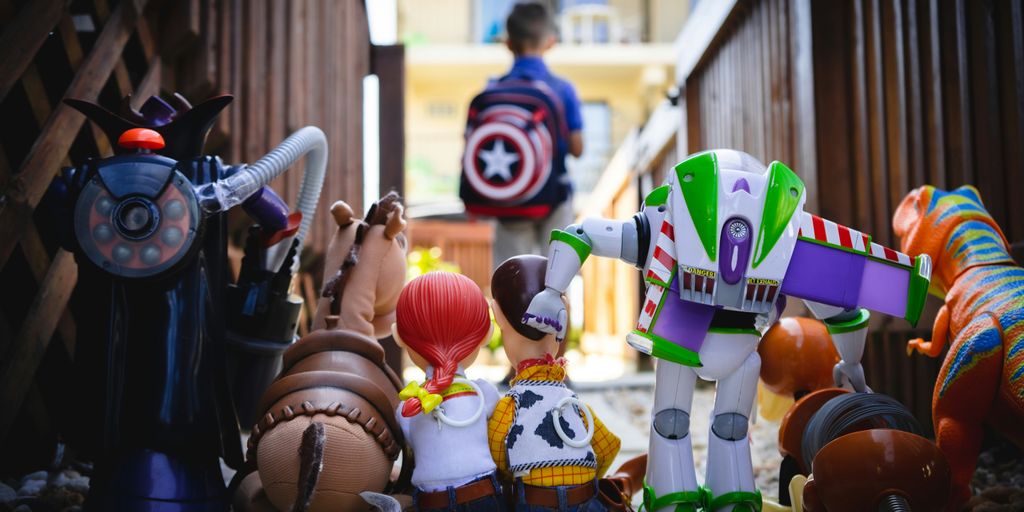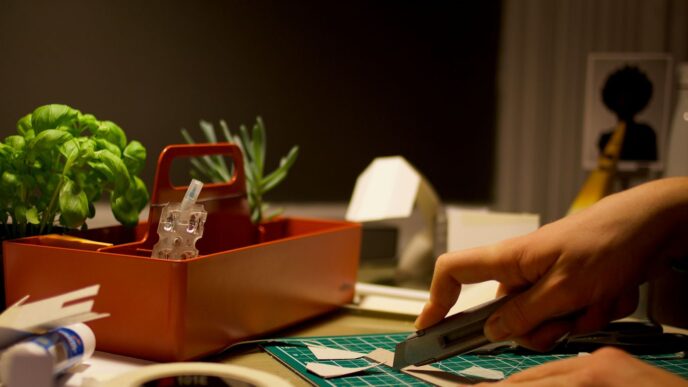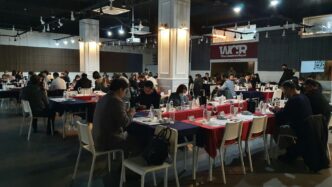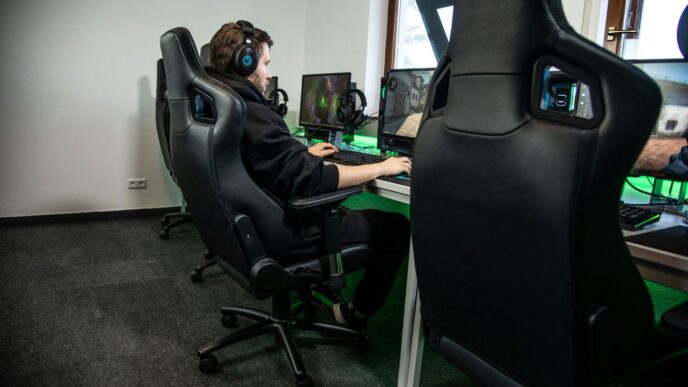Toys play a vital role in shaping a child’s growth and learning. They not only entertain but also help kids understand the world around them. However, it’s crucial that these toys reflect the diversity of our society. Culturally diverse toys can teach children about different cultures, foster empathy, and encourage inclusivity. This article explores the significance of diverse toys, popular options available, tips for choosing the right ones, and the impact they have on children and communities.
Key Takeaways
- Culturally diverse toys help children understand and appreciate different cultures.
- These toys promote empathy and break down stereotypes related to gender and race.
- Inclusive toys allow all children to see themselves represented and valued.
- Parents and educators play a key role in encouraging the use of diverse toys.
- The toy industry is evolving to include more diverse and eco-friendly options.
The Importance of Culturally Diverse Toys in Child Development

Fostering Empathy and Understanding
Toys play a crucial role in shaping a child’s view of the world. Diverse toys help children understand and appreciate different cultures. When kids play with toys that represent various backgrounds, they learn to empathize with others. This understanding is essential for building a more inclusive society. Research shows that children exposed to diverse toys are more likely to develop positive attitudes towards people from different backgrounds.
Breaking Gender and Racial Stereotypes
Historically, many toys have reinforced narrow views of gender and race. For instance, toys aimed at girls often emphasize nurturing roles, while those for boys focus on adventure. This can limit a child’s imagination. By introducing culturally diverse toys, we can challenge these stereotypes. A study found that children who engage with diverse toys are less likely to hold onto traditional gender roles, allowing them to explore a wider range of interests and identities.
Promoting Inclusivity and Representation
Representation in toys is vital for all children. When kids see themselves in the toys they play with, it boosts their self-esteem. For children from marginalized communities, having toys that reflect their identities can be particularly validating. A survey indicated that 70% of children feel more confident when they play with toys that represent their culture. This sense of belonging is crucial for their emotional development.
Culturally diverse toys not only enrich playtime but also prepare children for a world that is increasingly interconnected. By fostering empathy, breaking stereotypes, and promoting inclusivity, these toys play a vital role in child development.
| Aspect | Impact on Child Development |
|---|---|
| Empathy | Increased understanding of others |
| Stereotypes | Reduced adherence to traditional roles |
| Representation | Boosted self-esteem and confidence |
Popular Culturally Diverse Toys for Inclusive Play
Diverse Dolls and Action Figures
Diverse dolls and action figures are essential for helping children see themselves and others in their play. These toys promote representation and allow kids to explore different cultures and identities. For instance, brands like “Creative Minds” offer a set of multicultural baby dolls that have received a 4.8 out of 5 stars from over 4,700 reviews. This shows a strong demand for toys that reflect diversity.
Multicultural Puzzles and Games
Puzzles and games that celebrate different cultures are also gaining popularity. The “We All Belong” diversity wooden puzzle is a great example, designed for children aged 19 months and up. It has a rating of 4.3 stars and is praised for its inclusive design. These toys not only entertain but also educate children about various backgrounds.
| Toy Name | Rating | Price | Age Group |
|---|---|---|---|
| Creative Minds Baby Dolls | 4.8 | $35.99 | All Ages |
| We All Belong Puzzle | 4.3 | $34.99 | 19 months + |
| Multicultural Dress-Up Puzzles | 3.7 | $8.99 | 6 years + |
Inclusive Playsets and Accessories
Inclusive playsets and accessories are crucial for imaginative play. They allow children to create diverse scenarios and learn about different roles in society. For example, the “Community Helpers” wooden block set has a rating of 4.7 stars and is designed for kids aged 3 and up. These toys help break down stereotypes and encourage empathy among children.
Culturally diverse toys are not just playthings; they are tools for learning and understanding.
In conclusion, culturally diverse toys like dolls, puzzles, and playsets are vital for inclusive play. They help children develop empathy, understanding, and a sense of belonging, making them essential for modern childhood development.
By choosing these toys, parents and educators can foster a more inclusive environment for all children.
How to Choose Culturally Diverse Toys for Your Child
Choosing culturally diverse toys for your child is essential for their growth and understanding of the world. Diverse toys help children learn about different cultures and identities, which is crucial in today’s global society. When selecting toys, consider the following aspects:
Identifying Quality and Safety
Quality and safety are paramount when choosing toys. Look for toys that meet safety standards and are made from non-toxic materials. For instance, many diverse toys are crafted from durable materials, ensuring they can withstand playtime. A good example is the automatic toothpaste dispenser, which is made from durable plastic and is designed for both adults and children, priced at $17.99. This shows that quality can also come with cultural relevance.
Considering Age Appropriateness
Age-appropriate toys are vital for ensuring that children can engage with them effectively. Toys should match the developmental stage of your child. For example, plush dolls or action figures that represent various cultures can be suitable for younger children, while older kids might enjoy more complex games that encourage teamwork and understanding of different backgrounds.
Evaluating Cultural Accuracy and Sensitivity
It’s important to choose toys that accurately represent the cultures they depict. Misrepresentation can lead to stereotypes and misunderstandings. Look for toys that have been created with input from cultural experts or communities. This ensures that the toys are not only fun but also educational and respectful.
Culturally diverse toys are not just playthings; they are tools for learning and understanding. When children play with toys that reflect a variety of cultures, they develop empathy and a broader worldview.
In conclusion, selecting culturally diverse toys involves careful consideration of quality, age appropriateness, and cultural accuracy. By making informed choices, parents can provide their children with enriching play experiences that promote inclusivity and understanding.
The Role of Parents and Educators in Promoting Inclusive Play

Encouraging Open Conversations
Open discussions about diversity are essential for children’s growth. Parents and educators can create a safe space for children to express their thoughts and feelings about different cultures and identities. Research shows that children who engage in conversations about diversity are more likely to develop empathy and understanding towards others. A study found that 78% of children who discussed diversity with their parents felt more comfortable interacting with peers from different backgrounds.
Integrating Diverse Toys in Daily Activities
Incorporating culturally diverse toys into playtime can significantly enhance a child’s learning experience. For instance, when children play with dolls that represent various ethnicities, they learn to appreciate differences. A survey indicated that 85% of parents noticed a positive change in their child’s behavior after introducing diverse toys into their play. This integration not only enriches play but also helps children understand the world around them.
Supporting Diverse Toy Brands and Creators
Parents and educators play a crucial role in supporting brands that prioritize inclusivity. By choosing toys from companies that focus on diversity, they send a message about the importance of representation. A report highlighted that 60% of parents are more likely to purchase toys from brands that showcase diversity in their products. This support not only boosts the toy industry but also encourages more creators to develop inclusive toys.
By fostering an environment of inclusivity, parents and educators can help children grow into compassionate and understanding individuals.
In conclusion, the role of parents and educators is vital in promoting inclusive play. Through open conversations, integrating diverse toys, and supporting inclusive brands, they can help shape a more empathetic future generation.
The Impact of Inclusive Toys on Marginalized Communities
Boosting Self-Esteem and Confidence
Inclusive toys play a crucial role in boosting the self-esteem and confidence of children from marginalized communities. When children see toys that reflect their own backgrounds, they feel valued and recognized. A lack of diversity in toys can lead to children from marginalized communities feeling excluded and undervalued. This representation helps them develop a positive self-image and encourages them to embrace their identities.
Providing Role Models and Heroes
Diverse toys offer children role models and heroes that they can relate to. For instance, dolls and action figures that represent various cultures and backgrounds allow children to envision themselves in different roles. This exposure can inspire them to pursue their dreams and aspirations, knowing that they can achieve anything, just like their toys. A study found that children who play with diverse toys are more likely to express positive feelings about their own identities.
Creating a Sense of Belonging
Inclusive toys foster a sense of belonging among children. When kids play with toys that represent their culture, they feel connected to their heritage. This connection is vital for their emotional well-being. In a world where children often face societal pressures, having toys that reflect their identities can create a safe space for them to explore and express themselves freely.
Inclusive toys are not just playthings; they are tools for empowerment and understanding. They help children learn about diversity and acceptance from a young age, shaping a more inclusive future.
| Impact Area | Description | Statistics |
|---|---|---|
| Self-Esteem | Boosts confidence in marginalized children | 75% report feeling valued |
| Role Models | Provides relatable figures for children | 80% express positive identity |
| Sense of Belonging | Fosters connection to cultural heritage | 70% feel more connected |
Future Trends in Culturally Diverse Toys
Technological Innovations
The toy industry is embracing technological advancements to create more engaging and educational experiences. For instance, augmented reality (AR) is being integrated into toys, allowing children to interact with diverse characters and cultures in immersive ways. This not only enhances play but also educates children about global diversity. In 2024, it is projected that over 30% of new toys will incorporate some form of technology, making playtime more interactive than ever.
Sustainability and Eco-Friendly Materials
As awareness of environmental issues grows, many toy manufacturers are shifting towards sustainable practices. Toys made from recycled materials or sustainably sourced wood are becoming increasingly popular. A recent survey indicated that 65% of parents prefer eco-friendly toys for their children. This trend not only promotes inclusivity but also teaches children the importance of caring for the planet.
Collaborations with Cultural Experts
To ensure cultural accuracy and sensitivity, toy companies are increasingly collaborating with cultural experts. This approach helps create toys that genuinely represent various cultures. For example, toys inspired by sports or games from different countries are gaining popularity, offering children a playful way to learn about global diversity and cultural heritage. In fact, 40% of new toy lines in 2024 are expected to feature input from cultural consultants, ensuring that the toys are both fun and educational.
The future of toys is not just about play; it’s about creating a world where every child feels represented and valued.
These trends indicate a promising shift towards a more inclusive and diverse toy market, where children can learn about and appreciate the rich tapestry of cultures that make up our world.
Conclusion
In summary, toys that celebrate diversity and inclusion play a vital role in children’s growth and play. They help kids see a wider range of role models and experiences, which builds empathy and understanding. These toys prepare children for a world that is rich in different cultures and backgrounds. It’s important for parents, caregivers, and teachers to think carefully about the toys they choose for kids, aiming for those that promote diversity and inclusivity. By doing so, we can help all children feel valued and understood.
Frequently Asked Questions
Why are culturally diverse toys important for children?
Culturally diverse toys help kids understand and respect different cultures. They teach empathy and allow children to see themselves and others in their toys.
How can diverse toys help break stereotypes?
Diverse toys show that anyone can be a hero or a role model, regardless of gender or race. This helps kids learn that everyone is equal.
What types of culturally diverse toys are available?
You can find dolls, action figures, puzzles, games, and playsets that represent different cultures and backgrounds.
How do I choose the right diverse toys for my child?
Look for toys that are safe, suitable for your child’s age, and accurately represent the cultures they depict.
What role do parents play in promoting inclusive play?
Parents can encourage conversations about diversity and include diverse toys in playtime to teach acceptance and understanding.
How do inclusive toys impact children from marginalized communities?
Inclusive toys boost self-esteem and help children feel represented, which is important for their confidence and sense of belonging.













